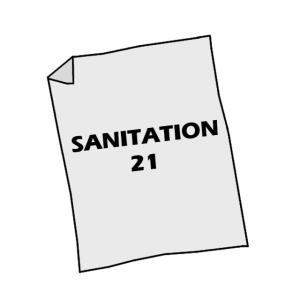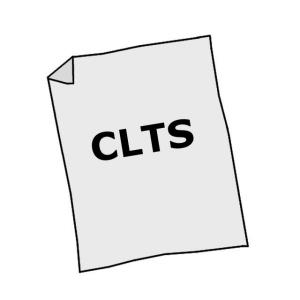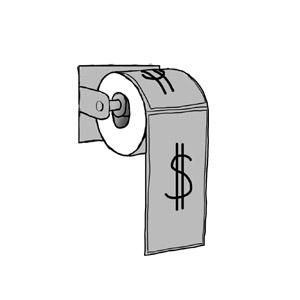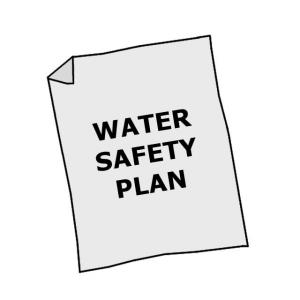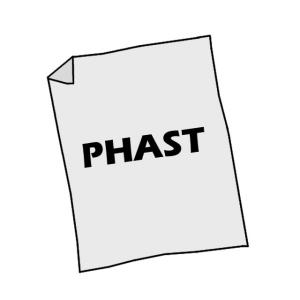Executive Summary
Stored urine is a concentrated source of nutrients that can be applied as a liquid fertilizer in agriculture and replace all or some commercial chemical fertilizers.
| In | Out |
|---|---|
Urine, Yellowwater, Fertiliser |
Food Products |
Introduction
The guidelines for urine use are based on storage time and temperature (see WHO guidelines on excreta use in agriculture for specific requirements). However, it is generally accepted that if urine is stored for at least 1 month, it will be safe for agricultural application at the household level. If urine is used for crops that are eaten by people other than the urine producer, it should be stored beforehand for 6 months.
Another beneficial use of urine is as an additive to enrich compost. Technologies for the production of urine-based fertilizers are currently under research (e.g., struvite, Emerging Sanitation Technologies).
From normal, healthy people, urine is virtually free of pathogens. Urine also contains the majority of nutrients that are excreted by the body. Its composition varies depending on diet, gender, climate, water intake, etc., but roughly 88% of nitrogen, 61% of phosphorus and 74% of potassium excreted from the body is in urine.
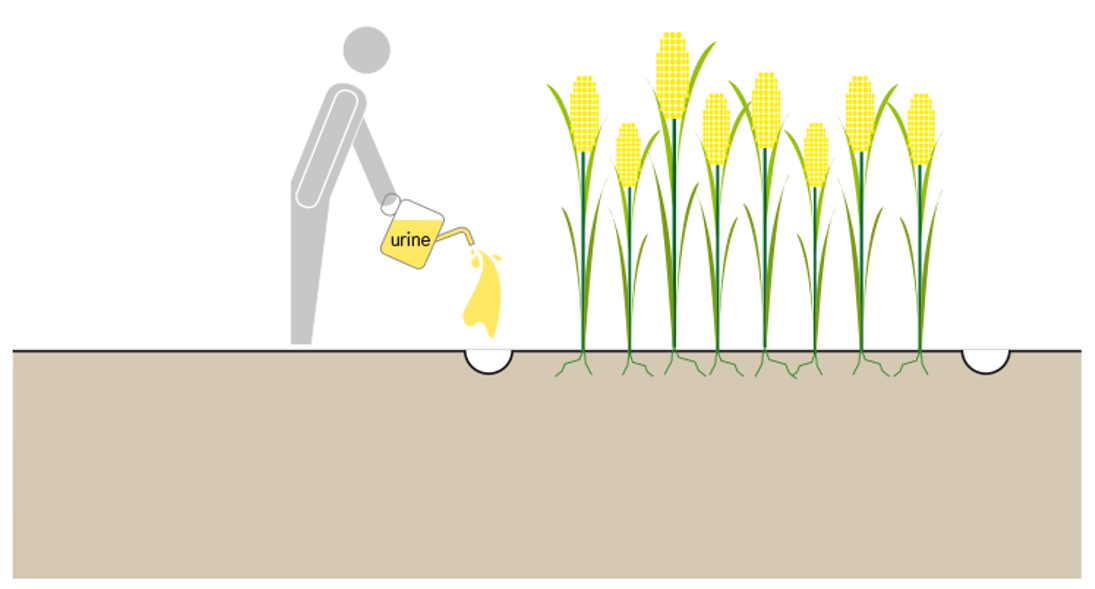
Design Considerations
Stored urine should not be applied directly to plants because of its high pH and concentrated form. Instead, it can be:
- mixed undiluted into soil before planting;
- poured into furrows, but at a sufficient distance away from the roots of the plants and immediately covered (although this should take place no more than once or twice during the growing season); and
- diluted several times, whereby it can be frequently used around plants (up to two times weekly).
The optimal application rate depends on the nitrogen demand and tolerance of the crop on which it will be used, the nitrogen concentration of the liquid, as well as the rate of ammonia loss during application. As a general rule of thumb, one can assume that 1 m2 of cropland can receive 1.5 L of urine per growing season (this quantity corresponds to the daily urine production of one person and to 40-110 kg N/ha). The urine of one person during one year is, thus, sufficient to fertilize 300 to 400 m2 of cropland.
A 3:1 mix of water and urine is an effective dilution for vegetables, although the correct amount depends on the soil and the type of vegetables. If diluted urine is used in an irrigation system, it is referred to as “fertigation”. During the rainy season, urine can also be applied directly into small holes near plants; then it is diluted naturally.
Health Aspects/Acceptance
Urine poses a minimal risk of infection, especially when it has been stored for an extended period of time. Yet, urine should be carefully handled and should not be applied to crops less than one month before they are harvested. This waiting period is especially important for crops that are consumed raw (refer to WHO guidelines for specific guidance).
Social acceptance may be difficult. Stored urine has a strong smell and some may find it offensive to work with it or to have it nearby. If urine is diluted and/or immediately tilled into the earth, however, its smell can be reduced. The use of urine may be less accepted in urban or peri-urban areas when household gardens are close to peoples’ homes than in rural areas where houses and crop land are kept separate.
Operation & Maintenance
Over time, some minerals in urine will precipitate (especially, calcium and magnesium phosphates). Equipment that is used to collect, transport or apply urine (i.e., watering cans with small holes) may become clogged over time. Most deposits can easily be removed with hot water and a bit of acid (vinegar), or in more extreme cases, manually chipped off.
Read our highly visited factsheet on coagulation-flocculation!
Urine is especially beneficial for crops lacking in nitrogen. Examples of some crops that grow well with urine include: maize, rice, millet, sorghum, wheat, chard, turnip, carrots, kale, cabbage, lettuce, bananas, paw-paw, and oranges.
Urine application is ideal for rural and peri-urban areas where agricultural lands are close to the point of urine collection. Households can use their own urine on their own plot of land. Alternatively, if facilities and infrastructure exist, urine can be collected at a semi-centralized location for distribution and transport to agricultural land.
Regardless, the most important aspect is that there is a need for nutrients from fertilizer for agriculture which can be supplied by the stored urine. When there is no such need, the urine can become a source of pollution and a nuisance.
An Ecological Approach to Sanitation in Africa
This book is about ways of building and managing the various simple eco-toilets designs. It discusses the important subject of using the recycled materials in agriculture with the help of many working examples.
Morgan, P. (2014): An Ecological Approach to Sanitation in Africa. A Compilation of Experiences. Harare: Aquamor URL [Accessed: 09.05.2019]Toilets That Make Compost
This book describes in an easy-to-understand and picture-based way how to construct three different low cost sanitation solutions, namely arborloos, fossa alterna and urine diversion toilets.
MORGAN, P. EcoSanRes (2007): Toilets That Make Compost . Stockholm: Stockholm Environment Institute URL [Accessed: 09.05.2019]Technology Review of Urine Diversion Components
The publication explains the purposes of urine diversion, its benefits and challenges, urine precipitation, urine treatment and reuse in agriculture. Further, it provides an overview on design and operational aspects for equipment needed, such as waterless urinals and urine diversion toilets including supplier information and indicative costs. Overall, it pulls together scattered knowledge around the topic of urine diversion in a concise manner.
MUENCH, E. von WINKER, M. (2011): Technology Review of Urine Diversion Components. Overview of Urine Diversion Components such as Waterless Urinals, Urine Diversion Toilets, Urine Storage and Reuse Systems. Eschborn: Deutsche Gesellschaft für Internationale Zusammenarbeit (GIZ) GmbH URL [Accessed: 11.05.2019]Practical Guidance on the Use of Urine in Crop Production
This practical guideline on the use of urine in agricultural productions gives some background information on basic plant requirements and how they can be met with urine as a liquid fertiliser.
RICHERT, A. GENSCH, R. JOENSSON, H. STENSTROEM, T.A. DAGERSKOG, L. (2010): Practical Guidance on the Use of Urine in Crop Production. (= EcoSanRes Publication Series, Report No. 2010-1 ). Stockholm: Stockholm Environment Institute (SEI) URL [Accessed: 26.05.2019]Guidelines for the safe use of wastewater excreta and greywater. Volume IV. Excreta and Greywater Use in Agriculture
Volume IV of the Guidelines for the Safe Use of Wastewater, Excreta and Greywater recognizes the reuse potential of wastewater and excreta (including urine) in agriculture and describes the present state of knowledge as regards potential health risks associated with the reuse as well as measures to manage these health risks following a multi-barrier approach.
WHO (2006): Guidelines for the safe use of wastewater excreta and greywater. Volume IV. Excreta and Greywater Use in Agriculture. Geneva: World Health Organisation (WHO) URL [Accessed: 09.05.2019] PDF
